 Artwork by Ing-On Vibulbhan-Watts
Artwork by Ing-On Vibulbhan-Watts
Ing’s Peace Poem Translated into Arabic
and Egyptian Art History Part 1
Ing’s Peace Poem “Peace Comes to You”
Translated into Arabic by Nancy Emad on October 14, 2015
| Subject: | Peace peom in arabic |
| From: | “Nancy Emad” |
| Date: | Wed, October 14, 2015 1:18 am |
| To: | ing@ingpeaceproject.com |
| Priority: | Normal |
| Options: | View Full Header | Print | Download this as a file | View as HTML |
| Hi Ing,my name is Nancy. I am the egyptian customer you met few days agoat your shop. I must say your peom is lovely. I wrote the translation andyou should receive it soon with my friend. I also wanted to write it here
as well so that you have both resources. I hope you like it and it reaches many. Best regards, Nancy |
Hi Nancy,
Today is my lucky and happy day receiving your translation of my Peace poem, “Peace Comes to You”, into Arabic. Thank you so much for your generosity and speedily work on the translation.
Would you mind explaining to me about your Arabic translation? Are your Arabic characters and translation universal or just for the Egyptian version and meaning?
I will post your translation and Egyptian art with a brief history of Egypt, on my Blog page. I have few more projects to be completed and posted on my website first. I will send you the link after I finish. I love Egyptian art and long history. I can hardly wait to have time to do the research on this subject.
I just posted “Ing’s Peace Poem Translated into Iranian and Iranian Artwork” not too long ago. The link is:
https://ingpeaceproject.com/2015/07/15/ings-peace-poem-translated-into-iranian/
If you have time please view this project, it will give you some idea about how I am going to work on your Arabic translation for the project. Your name will be in your written translation. A person who translated Iranian did not want to have the name in the project.
Ing’s Peace Project page is a main page containing different languages.
https://ingpeaceproject.com/ing-peace-project/
Peace Poem – Chinese Part 1
https://ingpeaceproject.com/ing-peace-project/peace-poem-chinese/
Thanks again for translating my peace proem into Arabic. My peace project is not copyrighted. You can show to your friends and family. If you want to open your own peace project in your country that will be very nice. We can exchange ideas and materials, for example you can use my work to post on your website or Facebook and I will be glad to put your work on my website. The idea is to encourage and activate the conversation on Peace. We need peace all over the world. You are part of our younger generation that going to govern the future of the human race. We need more young people to participate and be more conscious about World Peace.
All the best,
Ing
Ing-On Vibulbhan-Watts
PS. Do you mind if I post our email conversation in the project of your Arabic translation?
10.14.2015
Nancy Emad
The translation is to the original Arabic language not only Egyptian, it can work for any Arabic speaking tongue. I wrote it with my handwriting and you should be receiving the paper soon from my friend.
Nancy Emad
Thank you very much Nancy. I am looking forward to see your handwriting of your Arabic translation.
Best,
Ing
10.15.2015
And of course you can post my email and my name 🙂
It’s been a pleasure.
Best regards,
Nancy Abdelmalak
Ancient Egypt
From Wikipedia, the free encyclopedia
For the British history magazine, see Ancient Egypt (magazine).
The Great Sphinx and the pyramids of Giza are among the most recognizable symbols of the civilization of ancient Egypt.
|
Part of a series on the |
||||||||||||||||||||
|
||||||||||||||||||||
|
||||||||||||||||||||
|
||||||||||||||||||||
|
||||||||||||||||||||
|
||||||||||||||||||||
|
||||||||||||||||||||
|
Dynasties of Ancient Egypt |
||||||||||||||||||||
Ancient Egypt was a civilization of ancient Northeastern Africa, concentrated along the lower reaches of the Nile River in what is now the modern country of Egypt. It is one of six civilizations globally to arise independently. Egyptian civilization coalesced around 3150 BC (according to conventional Egyptian chronology)[1] with the political unification of Upper and Lower Egypt under the first pharaoh.[2] The history of ancient Egypt occurred in a series of stable Kingdoms, separated by periods of relative instability known as Intermediate Periods: the Old Kingdom of the Early Bronze Age, the Middle Kingdom of the Middle Bronze Age and the New Kingdom of the Late Bronze Age.
Egypt reached the pinnacle of its power during the New Kingdom, in the Ramesside period where it rivalled the Hittite Empire, Assyrian Empire and Mitanni Empire, after which it entered a period of slow decline. Egypt was invaded or conquered by a succession of foreign powers, such as the Canaanites/Hyksos, Libyans, the Nubians, the Assyrians, Babylonians, the Achaemenid Persians, and the Macedonians in the Third Intermediate Period and the Late Period of Egypt. In the aftermath of Alexander the Great‘s death, one of his generals, Ptolemy Soter, established himself as the new ruler of Egypt. This Greek Ptolemaic Kingdom ruled Egypt until 30 BC, when, under Cleopatra, it fell to the Roman Empire and became a Roman province.[3]
The success of ancient Egyptian civilization came partly from its ability to adapt to the conditions of the Nile River valley for agriculture. The predictable flooding and controlled irrigation of the fertile valley produced surplus crops, which supported a more dense population, and social development and culture. With resources to spare, the administration sponsored mineral exploitation of the valley and surrounding desert regions, the early development of an independent writing system, the organization of collective construction and agricultural projects, trade with surrounding regions, and a military intended to defeat foreign enemies and assert Egyptian dominance. Motivating and organizing these activities was a bureaucracy of elite scribes, religious leaders, and administrators under the control of a pharaoh, who ensured the cooperation and unity of the Egyptian people in the context of an elaborate system of religious beliefs.[4][5]
The many achievements of the ancient Egyptians include the quarrying, surveying and construction techniques that supported the building of monumental pyramids, temples, and obelisks; a system of mathematics, a practical and effective system of medicine, irrigation systems and agricultural production techniques, the first known ships,[6] Egyptian faience and glass technology, new forms of literature, and the earliest known peace treaty, made with the Hittites.[7] Egypt left a lasting legacy. Its art and architecture were widely copied, and its antiquities carried off to far corners of the world. Its monumental ruins have inspired the imaginations of travelers and writers for centuries. A new-found respect for antiquities and excavations in the early modern period by Europeans and Egyptians led to the scientific investigation of Egyptian civilization and a greater appreciation of its cultural legacy.[8]
History of ancient Egypt, History of Egypt and Population history of Egypt
Map of ancient Egypt, showing major cities and sites of the Dynastic period (c. 3150 BC to 30 BC)
Jeff Dahl – Own work. See #References for references used creating the map. Image renamed from File:Ancient Egypt map.svg (see #Original upload log).
Map of Ancient Egypt, showing the Nile up to the fifth cataract, and major cities and sites of the Dynastic period (c. 3150 BC to 30 BC). Cairo and Jerusalem are shown as reference cities.
The Nile has been the lifeline of its region for much of human history.[9] The fertile floodplain of the Nile gave humans the opportunity to develop a settled agricultural economy and a more sophisticated, centralized society that became a cornerstone in the history of human civilization.[10] Nomadic modern human hunter-gatherers began living in the Nile valley through the end of the Middle Pleistocene some 120,000 years ago. By the late Paleolithic period, the arid climate of Northern Africa became increasingly hot and dry, forcing the populations of the area to concentrate along the river region.
Predynastic period
A typical Naqada II jar decorated with gazelles. (Predynastic Period)
A Naqada II vase decorated with gazelles, on display at the Louvre.
Unknown – Guillaume Blanchard, Juillet 2004, Fujifilm S6900
In Predynastic and Early Dynastic times, the Egyptian climate was much less arid than it is today. Large regions of Egypt were covered in treed savanna and traversed by herds of grazing ungulates. Foliage and fauna were far more prolific in all environs and the Nile region supported large populations of waterfowl. Hunting would have been common for Egyptians, and this is also the period when many animals were first domesticated.[11]
By about 5500 BC, small tribes living in the Nile valley had developed into a series of cultures demonstrating firm control of agriculture and animal husbandry, and identifiable by their pottery and personal items, such as combs, bracelets, and beads. The largest of these early cultures in upper (Southern) Egypt was the Badari, which probably originated in the Western Desert; it was known for its high quality ceramics, stone tools, and its use of copper.[12]
The Badari was followed by the Amratian (Naqada I) and Gerzeh (Naqada II) cultures,[13] which brought a number of technological improvements. As early as the Naqada I Period, predynastic Egyptians imported obsidian from Ethiopia, used to shape blades and other objects from flakes.[14] In Naqada II times, early evidence exists of contact with the Near East, particularly Canaan and the Byblos coast.[15] Over a period of about 1,000 years, the Naqada culture developed from a few small farming communities into a powerful civilization whose leaders were in complete control of the people and resources of the Nile valley.[16] Establishing a power center at Hierakonpolis, and later at Abydos, Naqada III leaders expanded their control of Egypt northwards along the Nile.[17] They also traded with Nubia to the south, the oases of the western desert to the west, and the cultures of the eastern Mediterranean and Near East to the east.[17] Royal Nubian burials at Qustul produced artifacts bearing the oldest-known examples of Egyptian dynastic symbols, such as the white crown of Egypt and falcon.[18][19]
The Naqada culture manufactured a diverse selection of material goods, reflective of the increasing power and wealth of the elite, as well as societal personal-use items, which included combs, small statuary, painted pottery, high quality decorative stone vases, cosmetic palettes, and jewelry made of gold, lapis, and ivory. They also developed a ceramic glaze known as faience, which was used well into the Roman Period to decorate cups, amulets, and figurines.[20] During the last predynastic phase, the Naqada culture began using written symbols that eventually were developed into a full system of hieroglyphs for writing the ancient Egyptian language.[21]
Early Dynastic Period (c. 3050–2686 BC)
Main article: Early Dynastic Period of Egypt
The Early Dynastic Period was approximately contemporary to the early Sumerian–Akkadian civilisation of Mesopotamia and of ancient Elam. The third-century BC Egyptian priest Manetho grouped the long line of pharaohs from Menes to his own time into 30 dynasties, a system still used today.[22] He chose to begin his official history with the king named “Meni” (or Menes in Greek) who was believed to have united the two kingdoms of Upper and Lower Egypt (around 3100 BC).[23]
The transition to a unified state happened more gradually than ancient Egyptian writers represented, and there is no contemporary record of Menes. Some scholars now believe, however, that the mythical Menes may have been the pharaoh Narmer, who is depicted wearing royal regalia on the ceremonial Narmer Palette, in a symbolic act of unification.[24] In the Early Dynastic Period about 3150 BC, the first of the Dynastic pharaohs solidified control over lower Egypt by establishing a capital at Memphis, from which he could control the labour force and agriculture of the fertile delta region, as well as the lucrative and critical trade routes to the Levant. The increasing power and wealth of the pharaohs during the early dynastic period was reflected in their elaborate mastaba tombs and mortuary cult structures at Abydos, which were used to celebrate the deified pharaoh after his death.[25] The strong institution of kingship developed by the pharaohs served to legitimize state control over the land, labour, and resources that were essential to the survival and growth of ancient Egyptian civilization.[26]
The Narmer Palette depicts the unification of the Two Lands.[27]
- Public Domain
- File:NarmerPalette ROM-gamma.jpg
- Uploaded by Jeff Dahl
- Uploaded: 10 December 2007
Old Kingdom (2686–2181 BC)
The Giza Pyramids
All Giza Pyramids in one shot. Ricardo Liberato – All Gizah Pyramids
Major advances in architecture, art, and technology were made during the Old Kingdom, fueled by the increased agricultural productivity and resulting population, made possible by a well-developed central administration.[28] Some of ancient Egypt’s crowning achievements, the Giza pyramids and Great Sphinx, were constructed during the Old Kingdom. Under the direction of the vizier, state officials collected taxes, coordinated irrigation projects to improve crop yield, drafted peasants to work on construction projects, and established a justice system to maintain peace and order.[29]
Khafre Enthroned
Jon Bodsworth – https://www.egyptarchive.co.uk/html/cairo_museum_10.html
Statue of Khafre in diorite. Valley Temple of Khafra, Giza. Egyptian Museum, Cairo. Main floor – room 42. Diorite: height 168 cm, width 57 cm, depth 96 cm. JE 10062 – CG 14.
File:Khafre statue.jpg, Uploaded by Jeff Dahl, Created: 10 December 2007
Permission details
This file was transferred from Egypt Archive website under the license Copyrighted free use (see permission here). In short: you are free to use it for any purpose including unrestricted redistribution, commercial use, and modification. This is Mr. Jon Bodsworth’s statement about his pictures from Egypt Archive: “All the photographs on this site are from my own originals and are copyright free. They can be reproduced in any medium. If you use any on the web I would appreciate an email. This site was designed to put as many photographs on the web as possible in an easy to use format. I have deliberately kept captions to a minimum but if you would like more information on any of the photographs let me know. The photographs on this website are only a small proportion of over 3,500 that I have covering many areas of Egypt. If there is a specific photograph that you are looking for please let me know.” If you use any of the pictures on the web, the author Jon Bodsworth would appreciate an email: jon@egyptarchive.co.uk As of March 2011, Egypt Archive website was closed so if a file is uploaded after that time we need further proof of permission.
Thanks to Mr. Jon Bodsworth for his generosity to allow people to use his photos copyright free. Ing-On VibulBhan-Watts
Along with the rising importance of a central administration arose a new class of educated scribes and officials who were granted estates by the pharaoh in payment for their services. Pharaohs also made land grants to their mortuary cults and local temples, to ensure that these institutions had the resources to worship the pharaoh after his death. Scholars believe that five centuries of these practices slowly eroded the economic power of the pharaoh, and that the economy could no longer afford to support a large centralized administration.[30] As the power of the pharaoh diminished, regional governors called nomarchs began to challenge the supremacy of the pharaoh. This, coupled with severe droughts between 2200 and 2150 BC,[31] is assumed to have caused the country to enter the 140-year period of famine and strife known as the First Intermediate Period.[32]
First Intermediate Period (2181–1991 BC)
First Intermediate Period of Egypt
After Egypt’s central government collapsed at the end of the Old Kingdom, the administration could no longer support or stabilize the country’s economy. Regional governors could not rely on the king for help in times of crisis, and the ensuing food shortages and political disputes escalated into famines and small-scale civil wars. Yet despite difficult problems, local leaders, owing no tribute to the pharaoh, used their new-found independence to establish a thriving culture in the provinces. Once in control of their own resources, the provinces became economically richer—which was demonstrated by larger and better burials among all social classes.[33] In bursts of creativity, provincial artisans adopted and adapted cultural motifs formerly restricted to the royalty of the Old Kingdom, and scribes developed literary styles that expressed the optimism and originality of the period.[34]
Free from their loyalties to the pharaoh, local rulers began competing with each other for territorial control and political power. By 2160 BC, rulers in Herakleopolis controlled Lower Egypt in the north, while a rival clan based in Thebes, the Intef family, took control of Upper Egypt in the south. As the Intefs grew in power and expanded their control northward, a clash between the two rival dynasties became inevitable. Around 2055 BC the northern Theban forces under Nebhepetre Mentuhotep II finally defeated the Herakleopolitan rulers, reuniting the Two Lands. They inaugurated a period of economic and cultural renaissance known as the Middle Kingdom.[35]
Middle Kingdom (2134–1690 BC)
Amenemhat III, the last great ruler of the Middle Kingdom
Own work (Guillaume Blanchard)
Antiquité égyptienne du musée du Louvre. Visage d’Amenemhat III, en calcaire.
CC BY-SA 3.0, File:Egypte louvre 231 visage.jpg, Uploaded by Aoineko, Created: 30 June 2004
The pharaohs of the Middle Kingdom restored the country’s prosperity and stability, thereby stimulating a resurgence of art, literature, and monumental building projects.[36] Mentuhotep II and his Eleventh Dynasty successors ruled from Thebes, but the vizier Amenemhat I, upon assuming kingship at the beginning of the Twelfth Dynasty around 1985 BC, shifted the nation’s capital to the city of Itjtawy, located in Faiyum.[37] From Itjtawy, the pharaohs of the Twelfth Dynasty undertook a far-sighted land reclamation and irrigation scheme to increase agricultural output in the region. Moreover, the military reconquered territory in Nubia that was rich in quarries and gold mines, while laborers built a defensive structure in the Eastern Delta, called the “Walls-of-the-Ruler“, to defend against foreign attack.[38]
With the pharaohs’ having secured military and political security and vast agricultural and mineral wealth, the nation’s population, arts, and religion flourished. In contrast to elitist Old Kingdom attitudes towards the gods, the Middle Kingdom experienced an increase in expressions of personal piety and what could be called a democratization of the afterlife, in which all people possessed a soul and could be welcomed into the company of the gods after death.[39] Middle Kingdom literature featured sophisticated themes and characters written in a confident, eloquent style.[34] The relief and portrait sculpture of the period captured subtle, individual details that reached new heights of technical perfection.[40]
The last great ruler of the Middle Kingdom, Amenemhat III, allowed Semitic-speaking Canaanite settlers from the Near East into the delta region to provide a sufficient labour force for his especially active mining and building campaigns. These ambitious building and mining activities, however, combined with severe Nile floods later in his reign, strained the economy and precipitated the slow decline into the Second Intermediate Period during the later Thirteenth and Fourteenth dynasties. During this decline, the Canaanite settlers began to seize control of the delta region, eventually coming to power in Egypt as the Hyksos.[41]
Second Intermediate Period (1674–1549 BC) and the Hyksos
Second Intermediate Period of Egypt
Around 1785 BC, as the power of the Middle Kingdom pharaohs weakened, a Semitic Canaanite people called the Hyksos had already settled in the Eastern Delta town of Avaris, seized control of Egypt, and forced the central government to retreat to Thebes. The pharaoh was treated as a vassal and expected to pay tribute.[42] The Hyksos (“foreign rulers”) retained Egyptian models of government and identified as pharaohs, thus integrating Egyptian elements into their culture. They and other Semitic invaders introduced new tools of warfare into Egypt, most notably the composite bow and the horse-drawn chariot.[43]
After their retreat, the native Theban kings found themselves trapped between the Canaanite Hyksos ruling the north and the Hyksos’ Nubian allies, the Kushites, to the south of Egypt. After years of vassalage, Thebes gathered enough strength to challenge the Hyksos in a conflict that lasted more than 30 years, until 1555 BC.[42] The pharaohs Seqenenre Tao II and Kamose were ultimately able to defeat the Nubians to the south of Egypt, but failed to defeat the Hyksos. That task fell to Kamose’s successor, Ahmose I, who successfully waged a series of campaigns that permanently eradicated the Hyksos’ presence in Egypt. He established a new dynasty. In the New Kingdom that followed, the military became a central priority for the pharaohs seeking to expand Egypt’s borders and attempting to gain mastery of the Near East.[44]
The maximum territorial extent of ancient Egypt (15th century BC)
Original by [[en:User:Andrei Nacu]], edits by Jeff Dahl – Modified from en:Image:Egypt_1450_BC.svg by [[en:User:Andrei Nacu]], modified by uploader
Map of Egypt’s territorial control during the New Kingdom. Modified from en:Image:Egypt_1450_BC.svg; includes a more muted color scheme.
CC BY-SA 3.0, File:Egypt NK edit.svg, Uploaded by Rowanwindwhistler, Created: 7 July 2008
New Kingdom (1549–1069 BC)
The New Kingdom pharaohs established a period of unprecedented prosperity by securing their borders and strengthening diplomatic ties with their neighbours, including the Mitanni Empire, Assyria, and Canaan. Military campaigns waged under Tuthmosis I and his grandson Tuthmosis III extended the influence of the pharaohs to the largest empire Egypt had ever seen. Between their reigns, Hatshepsut generally promoted peace and restored trade routes lost during the Hyksos occupation, as well as expanding to new regions. When Tuthmosis III died in 1425 BC, Egypt had an empire extending from Niya in north west Syria to the fourth waterfall of the Nile in Nubia, cementing loyalties and opening access to critical imports such as bronze and wood.[45]
Djeser-Djeseru is the main building of Hatshepsut’s mortuary temple complex at Deir el-Bahri; the building is an example of perfect symmetry that predates the Parthenon by a thousand years
Andrea Piroddi – Own work
Il tempio di Hatshepsut a Luxor
CC BY-SA 3.0, File:Il tempio di Hatshepsut.JPG, Uploaded by Piroddi.andrea, Uploaded: 8 February 2008
The New Kingdom pharaohs began a large-scale building campaign to promote the god Amun, whose growing cult was based in Karnak. They also constructed monuments to glorify their own achievements, both real and imagined. The Karnak temple is the largest Egyptian temple ever built.[46] The pharaoh Hatshepsut used such hyperbole and grandeur during her reign of almost twenty-two years.[47] Her reign was very successful, marked by an extended period of peace and wealth-building, trading expeditions to Punt, restoration of foreign trade networks, and great building projects, including an elegant mortuary temple that rivaled the Greek architecture of a thousand years later, a colossal pair of obelisks, and a chapel at Karnak. Despite her achievements, Amenhotep II, the heir to Hatshepsut’s nephew-stepson Tuthmosis III, sought to erase her legacy near the end of his father’s reign and throughout his, touting many of her accomplishments as his.[48] He also tried to change many established traditions that had developed over the centuries, which some suggest was a futile attempt to prevent other women from becoming pharaoh and to curb their influence in the kingdom.
Around 1350 BC, the stability of the New Kingdom seemed threatened further when Amenhotep IV ascended the throne and instituted a series of radical and chaotic reforms. Changing his name to Akhenaten, he touted the previously obscure sun deity Aten as the supreme deity, suppressed the worship of most other deities, and attacked the power of the temple that had become dominated by the priests of Amun in Thebes, whom he saw as corrupt.[49] Moving the capital to the new city of Akhetaten (modern-day Amarna), Akhenaten turned a deaf ear to events in the Near East (where the Hittites, Mitanni, and Assyrians were vying for control). He was devoted to his new religion and artistic style. After his death, the cult of the Aten was quickly abandoned, the priests of Amun soon regained power and returned the capital to Thebes. Under their influence the subsequent pharaohs Tutankhamun, Ay, and Horemheb worked to erase all mention of Akhenaten’s heresy, now known as the Amarna Period.[50]
Four colossal statues of Ramesses II flank the entrance of his temple Abu Simbel
Steve F-E-Cameron (Merlin-UK) – Own work (Self Photograph)
Abu Simbel in the heart of Nubia, the Temple of Rameses II
CC BY-SA 3.0view terms, File:SFEC EGYPT ABUSIMBEL 2006-003.JPG, Uploaded by Merlin-UK, Created: 31 December 2005
Around 1279 BC, Ramesses II, also known as Ramesses the Great, ascended the throne, and went on to build more temples, erect more statues and obelisks, and sire more children than any other pharaoh in history.[51] A bold military leader, Ramesses II led his army against the Hittites in the Battle of Kadesh (in modern Syria) and, after fighting to a stalemate, finally agreed to the first recorded peace treaty, around 1258 BC.[52] With both the Egyptians and Hittite Empire proving unable to gain the upper hand over one another, and both powers also fearful of the expanding Middle Assyrian Empire, Egypt withdrew from much of the Near East. The Hittites were thus left to compete unsuccessfully with the powerful Assyrians and the newly arrived Phrygians.
Egypt’s wealth, however, made it a tempting target for invasion, particularly by the Libyan Berbers to the west, and the Sea Peoples, a conjectured[53][54] confederation of seafarers from the Aegean. Initially, the military was able to repel these invasions, but Egypt eventually lost control of its remaining territories in southern Caanan, much of it falling to the Assyrians. The effects of external threats were exacerbated by internal problems such as corruption, tomb robbery, and civil unrest. After regaining their power, the high priests at the temple of Amun in Thebes accumulated vast tracts of land and wealth, and their expanded power splintered the country during the Third Intermediate Period.[55]
Third Intermediate Period (1069–653 BC)
Third Intermediate Period of Egypt
Following the death of Ramesses XI in 1078 BC, Smendes assumed authority over the northern part of Egypt, ruling from the city of Tanis. The south was effectively controlled by the High Priests of Amun at Thebes, who recognized Smendes in name only.[56] During this time, Berber tribes from what was later to be called Libya had been settling in the western delta, and the chieftains of these settlers began increasing their autonomy. Libyan princes took control of the delta under Shoshenq I in 945 BC, founding the Libyan Berber, or Bubastite, dynasty that ruled for some 200 years. Shoshenq also gained control of southern Egypt by placing his family members in important priestly positions.
In the mid-ninth century BC, Egypt made a failed attempt to once more gain a foothold in Western Asia. Osorkon II of Egypt, along with a large alliance of nations and peoples, including Persia, Israel, Hamath, Phoenicia/Caanan, the Arabs, Arameans, and neo Hittites among others, engaged in the Battle of Karkar against the powerful Assyrian king Shalmaneser III in 853 BC. However, this coalition of powers failed and the Neo Assyrian Empire continued to dominate Western Asia.
Libyan Berber control began to erode as a rival native dynasty in the delta arose under Leontopolis. Also, the Nubians of the Kushites threatened Egypt from the lands to the south.[57]
Around 730 BC Libyans from the west fractured the political unity of the country
Around 730 BC Libyans from the west fractured the political unity of the country
Jeff Dahl – Own work
A map showing the political divisions in ancient Egypt during the Third intermediate Period, about 730 BC. The rulers of the 22nd and 23rd Dynasties ruled simultaneously, alongside Libyan chieftains controlling most of the Delta.
GFDL, File:Third Intermediate Period map.svg, Uploaded by Jeff Dahl, Created: 3 January 2008
Drawing on millennia of interaction (trade, acculturation, occupation, assimilation, and war[58]) with Egypt,[59] the Kushite king Piye left his Nubian capital of Napata and invaded Egypt around 727 BC. Piye easily seized control of Thebes and eventually the Nile Delta.[60] He recorded the episode on his stela of victory. Piye set the stage for subsequent Twenty-fifth dynasty pharaohs,[61] such as Taharqa, to reunite the “Two lands” of Northern and Southern Egypt. The Nile valley empire was as large as it had been since the New Kingdom.
The Twenty-fifth dynasty ushered in a renaissance period for ancient Egypt.[62] Religion, the arts, and architecture were restored to their glorious Old, Middle, and New Kingdom forms. Pharaohs, such as Taharqa, built or restored temples and monuments throughout the Nile valley, including at Memphis, Karnak, Kawa, Jebel Barkal, etc.[63] It was during the Twenty-fifth dynasty that there was the first widespread construction of pyramids (many in modern Sudan) in the Nile Valley since the Middle Kingdom.[64][65][66]
Piye made various unsuccessful attempts to extend Egyptian influence in the Near East, then controlled by Assyria. In 720 BC, he sent an army in support of a rebellion against Assyria, which was taking place in Philistia and Gaza. However, Piye was defeated by Sargon II and the rebellion failed. In 711 BC, Piye again supported a revolt against the Assyrians by the Israelites of Ashdod and was once again defeated by the Assyrian king Sargon II. Subsequently, Piye was forced from the Near East.[67]
From the 10th century BC onwards, Assyria fought for control of the southern Levant. Frequently, cities and kingdoms of the southern Levant appealed to Egypt for aide in their struggles against the powerful Assyrian army. Taharqa enjoyed some initial success in his attempts to regain a foothold in the Near East. Taharqa aided the Judean King Hezekiah when Hezekiah and Jerusalem was besieged by the Assyrian king, Sennacherib. Scholars disagree on the primary reason for Assyria’s abandonment of their siege on Jerusalem. Reasons for the Assyrian withdrawal range from conflict with the Egyptian/Kushite army to divine intervention to surrender to disease.[68] Henry Aubin argues that the Kushite/Egyptian army saved Jerusalem from the Assyrians and prevented the Assyrians from returning to capture Jerusalem for the remainder of Sennacherib’s life (20 years).[69] Some argue that disease was the primary reason for failing to actually take the city, however Senacherib’s annals claim Judah was forced into tribute regardless.[70]
Sennacherib had been murdered by his own sons for destroying the rebellious city of Babylon, a city sacred to all Mesopotamians, the Assyrians included. In 674 BC Esarhaddon launched a preliminary incursion into Egypt, however this attempt was repelled by Taharqa.[71] However, In 671 BC, Esarhaddon launched a full-scale invasion. Part of his army stayed behind to deal with rebellions in Phoenicia, and Israel. The remainder went south to Rapihu, then crossed the Sinai, and entered Egypt. Esarhaddon decisively defeated Taharqa, took Memphis, Thebes and all the major cities of Egypt, and Taharqa was chased back to his Nubian homeland. Esarhaddon now called himself “king of Egypt, Patros, and Kush“, and returned with rich booty from the cities of the delta; he erected a victory stele at this time, and paraded the captive Prince Ushankhuru, the son of Taharqa in Nineveh. Esarhaddon stationed a small army in northern Egypt and describes how “All Ethiopians (read Nubians/Kushites) I deported from Egypt, leaving not one left to do homage to me”.[72] He installed native Egyptian princes throughout the land to rule on his behalf.[73] The conquest by Esarhaddon effectively marked the end of the short lived Kushite Empire.
However, the native Egyptian rulers installed by Esarhaddon were unable to retain full control of the whole country for long. Two years later, Taharqa returned from Nubia and seized control of a section of southern Egypt as far north as Memphis. Esarhaddon prepared to return to Egypt and once more eject Taharqa, however he fell ill and died in his capital, Nineveh, before he left Assyria. His successor, Ashurbanipal, sent an Assyrian general named Sha-Nabu-shu with a small, but well trained army, which conclusively defeated Taharqa at Memphis and once more drove him from Egypt. Taharqa died in Nubia two years later.
Twenty-fifth Dynasty
Wufei07 – Own work, Nubian Pharoahs
Public Domainview terms, File:NubianPharoahs.jpg, Uploaded by Wufei07, Uploaded: 29 July 2009
His successor, Tanutamun, also made a failed attempt to regain Egypt for Nubia. He successfully defeated Necho, the native Egyptian puppet ruler installed by Ashurbanipal, taking Thebes in the process. The Assyrians then sent a large army southwards. Tantamani (Tanutamun) was heavily routed and fled back to Nubia. The Assyrian army sacked Thebes to such an extent it never truly recovered. A native ruler, Psammetichus I was placed on the throne, as a vassal of Ashurbanipal, and the Nubians were never again to pose a threat to either Assyria or Egypt.[74]
Late Period (672–332 BC)
Main articles: Late Period of ancient Egypt and History of Achaemenid Egypt
With no permanent plans for conquest, the Assyrians left control of Egypt to a series of vassals who became known as the Saite kings of the Twenty-sixth Dynasty. By 653 BC, the Saite king Psamtik I (taking advantage of the fact that Assyria was involved in a fierce war conquering Elam and that few Assyrian troops were stationed in Egypt) was able to free Egypt relatively peacefully from Assyrian vassalage with the help of Lydian and Greek mercenaries, the latter of whom were recruited to form Egypt’s first navy. Psamtik and his successors however were careful to maintain peaceful relations with Assyria. Greek influence expanded greatly as the city of Naukratis became the home of Greeks in the delta.
In 609 BC Necho II went to war with Babylonia, the Chaldeans, the Medians and the Scythians in an attempt to save Assyria, which after a brutal civil war was being overrun by this coalition of powers. However, the attempt to save Egypt’s former masters failed. The Egyptians delayed intervening too long, and Nineveh had already fallen and King Sin-shar-ishkun was dead by the time Necho II sent his armies northwards. However, Necho easily brushed aside the Israelite army under King Josiah but he and the Assyrians then lost a battle at Harran to the Babylonians, Medes and Scythians. Necho II and Ashur-uballit II of Assyria were finally defeated at Carchemish in Aramea (modern Syria) in 605 BC. The Egyptians remained in the area for some decades, struggling with the Babylonian kings Nabopolassar and Nebuchadnezzar II for control of portions of the former Assyrian Empire in The Levant. However, they were eventually driven back into Egypt, and Nebuchadnezzar II even briefly invaded Egypt itself in 567 BC.[70] The Saite kings based in the new capital of Sais witnessed a brief but spirited resurgence in the economy and culture, but in 525 BC, the powerful Persians, led by Cambyses II, began their conquest of Egypt, eventually capturing the pharaoh Psamtik III at the battle of Pelusium. Cambyses II then assumed the formal title of pharaoh, but ruled Egypt from his home of Susa in Persia (modern Iran), leaving Egypt under the control of a satrapy. A few temporarily successful revolts against the Persians marked the fifth century BC, but Egypt was never able to permanently overthrow the Persians.[75]
Following its annexation by Persia, Egypt was joined with Cyprus and Phoenicia (modern Lebanon) in the sixth satrapy of the Achaemenid Persian Empire. This first period of Persian rule over Egypt, also known as the Twenty-seventh dynasty, ended after more than one-hundred years in 402 BC, and from 380–343 BC the Thirtieth Dynasty ruled as the last native royal house of dynastic Egypt, which ended with the kingship of Nectanebo II. A brief restoration of Persian rule, sometimes known as the Thirty-first Dynasty, began in 343 BC, but shortly after, in 332 BC, the Persian ruler Mazaces handed Egypt over to the Macedonian ruler Alexander the Great without a fight.[76]
Ptolemaic Period
Alexander the Great, 100 BC – 100 AD, 54.162, Brooklyn Museum Charles Edwin Wilbour Fund – Brooklyn Museum
Alexander the Great, 100 B.C.E. – 100 C.E. marble, 3 1/2 x 2 x 1 1/2 in. (8.9 x 5.1 x 3.8 cm). Brooklyn Museum, Charles Edwin Wilbour Fund, 54.162
No restrictions, File:Alexander the Great, 100 B.C.E. – 100 C.E., 54.162.jpg, Uploaded by Johnbod, Created: 15 July 2014
History of Ptolemaic Egypt and Ptolemaic Kingdom
In 332 BC, Alexander the Great conquered Egypt with little resistance from the Persians and was welcomed by the Egyptians as a deliverer. The administration established by Alexander’s successors, the Macedonian Ptolemaic Kingdom, was based on an Egyptian model and based in the new capital city of Alexandria. The city showcased the power and prestige of Hellenistic rule, and became a seat of learning and culture, centered at the famous Library of Alexandria.[77] The Lighthouse of Alexandria lit the way for the many ships that kept trade flowing through the city—as the Ptolemies made commerce and revenue-generating enterprises, such as papyrus manufacturing, their top priority.[78]
Hellenistic culture did not supplant native Egyptian culture, as the Ptolemies supported time-honored traditions in an effort to secure the loyalty of the populace. They built new temples in Egyptian style, supported traditional cults, and portrayed themselves as pharaohs. Some traditions merged, as Greek and Egyptian gods were syncretized into composite deities, such as Serapis, and classical Greek forms of sculpture influenced traditional Egyptian motifs. Despite their efforts to appease the Egyptians, the Ptolemies were challenged by native rebellion, bitter family rivalries, and the powerful mob of Alexandria that formed after the death of Ptolemy IV.[79] In addition, as Rome relied more heavily on imports of grain from Egypt, the Romans took great interest in the political situation in the country. Continued Egyptian revolts, ambitious politicians, and powerful Syriac opponents from the Near East made this situation unstable, leading Rome to send forces to secure the country as a province of its empire.[80]
Roman Period
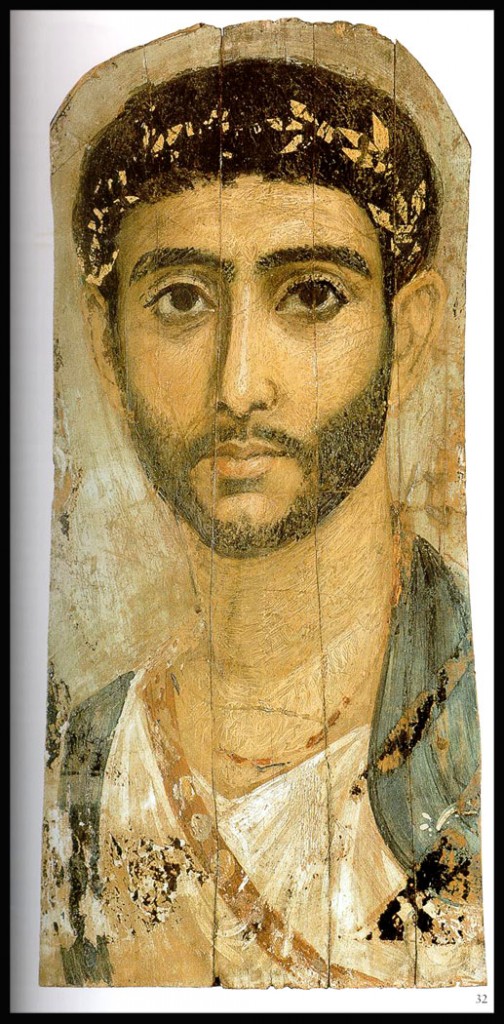 The Fayum mummy portraits epitomize the meeting of Egyptian and Roman cultures.
The Fayum mummy portraits epitomize the meeting of Egyptian and Roman cultures.
Public Domain, File:Fayum-22.jpg, Uploaded by Eloquence, Uploaded: 9 November 2004
Egypt became a province of the Roman Empire in 30 BC, following the defeat of Marc Antony and Ptolemaic Queen Cleopatra VII by Octavian (later Emperor Augustus) in the Battle of Actium. The Romans relied heavily on grain shipments from Egypt, and the Roman army, under the control of a prefect appointed by the Emperor, quelled rebellions, strictly enforced the collection of heavy taxes, and prevented attacks by bandits, which had become a notorious problem during the period.[81] Alexandria became an increasingly important center on the trade route with the orient, as exotic luxuries were in high demand in Rome.[82]
Although the Romans had a more hostile attitude than the Greeks towards the Egyptians, some traditions such as mummification and worship of the traditional gods continued.[83] The art of mummy portraiture flourished, and some Roman emperors had themselves depicted as pharaohs, though not to the extent that the Ptolemies had. The former lived outside Egypt and did not perform the ceremonial functions of Egyptian kingship. Local administration became Roman in style and closed to native Egyptians.[83]
From the mid-first century AD, Christianity took root in Egypt and it was originally seen as another cult that could be accepted. However, it was an uncompromising religion that sought to win converts from Egyptian Religion and Greco-Roman religion and threatened popular religious traditions. This led to the persecution of converts to Christianity, culminating in the great purges of Diocletian starting in 303, but eventually Christianity won out.[84] In 391 the Christian Emperor Theodosius introduced legislation that banned pagan rites and closed temples.[85] Alexandria became the scene of great anti-pagan riots with public and private religious imagery destroyed.[86] As a consequence, Egypt’s native religious culture was continually in decline. While the native population certainly continued to speak their language, the ability to read hieroglyphic writing slowly disappeared as the role of the Egyptian temple priests and priestesses diminished. The temples themselves were sometimes converted to churches or abandoned to the desert.[87]
Government and economy
Administration and commerce
The pharaoh was usually depicted wearing symbols of royalty and power.
Jeff Dahl – Own work
Pharaoh, the king of ancient Egypt, is often depicted wearing the nemes headdress and an ornate shendyt. Based on New Kingdom tomb paintings.
GFDL, File:Pharaoh.svg, Uploaded by Jeff Dahl, Created: 31 December 2007
The pharaoh was the absolute monarch of the country and, at least in theory, wielded complete control of the land and its resources. The king was the supreme military commander and head of the government, who relied on a bureaucracy of officials to manage his affairs. In charge of the administration was his second in command, the vizier, who acted as the king’s representative and coordinated land surveys, the treasury, building projects, the legal system, and the archives.[88] At a regional level, the country was divided into as many as 42 administrative regions called nomes each governed by a nomarch, who was accountable to the vizier for his jurisdiction. The temples formed the backbone of the economy. Not only were they houses of worship, but were also responsible for collecting and storing the nation’s wealth in a system of granaries and treasuries administered by overseers, who redistributed grain and goods.[89]
Much of the economy was centrally organized and strictly controlled. Although the ancient Egyptians did not use coinage until the Late period, they did use a type of money-barter system,[90] with standard sacks of grain and the deben, a weight of roughly 91 grams (3 oz) of copper or silver, forming a common denominator.[91] Workers were paid in grain; a simple laborer might earn 5½ sacks (200 kg or 400 lb) of grain per month, while a foreman might earn 7½ sacks (250 kg or 550 lb). Prices were fixed across the country and recorded in lists to facilitate trading; for example a shirt cost five copper deben, while a cow cost 140 deben.[91] Grain could be traded for other goods, according to the fixed price list.[91] During the fifth century BC coined money was introduced into Egypt from abroad. At first the coins were used as standardized pieces of precious metal rather than true money, but in the following centuries international traders came to rely on coinage.[92]
Social status
Egyptian society was highly stratified, and social status was expressly displayed. Farmers made up the bulk of the population, but agricultural produce was owned directly by the state, temple, or noble family that owned the land.[93] Farmers were also subject to a labor tax and were required to work on irrigation or construction projects in a corvée system.[94] Artists and craftsmen were of higher status than farmers, but they were also under state control, working in the shops attached to the temples and paid directly from the state treasury. Scribes and officials formed the upper class in ancient Egypt, known as the “white kilt class” in reference to the bleached linen garments that served as a mark of their rank.[95] The upper class prominently displayed their social status in art and literature. Below the nobility were the priests, physicians, and engineers with specialized training in their field. Slavery was known in ancient Egypt, but the extent and prevalence of its practice are unclear.[96]
Punishment in ancient Egypt.
Unknown – https://www.historyforkids.org/learn/egypt/people/picture/slavebeating.jpg
Punishment in Ancient Egypt. Slave (?) beating in Ancient Egypt
Public Domain, File:Slavebeating.jpg, Uploaded by Artuller, Created: Wall painting from 15th century BC Egyptian tomb.
Young Egyptian laborers treated by doctors after circumcision, as a part of a rite of passage to citizenship.
Young Egyptian laborers treated by doctors after circumcision, as a part of a rite of passage to citizenship.
GoShow – Own workFlickr photo
This is a poor papyri copy reproduced sold to tourists from an original relief line-art of the ancient Egyptian stela now on display at the Oriental Institute in Chicago, Illinois. It is a depiction originally in Ankhmahor’s tomb dating to Dynasty 6 and reign of King Teti (2355-2343 BCE) which appears on the east thickness of a doorway in the tomb in the pyramid complex of Teti. Depicting two men being circumcised, the scene has been interpreted in different ways however the nude male at right is surmounted by an inscription in which he says: sin wnnt r mnx (“Sever, indeed, thoroughly”) and the man kneeling before him, identifed as a Hm-kA, mortuary priest, says: iw(.i) r irt r nDm (“I will proceed carefully”). Finally the man doing the restraining is saying: nDr sw m rdi dbA.f (“Hold him fast. Do not let him faint”) whilst the restrainer says: iri.i r Hst.k (“I will do as you wish”). The Greek historian Herodotus, writing in the mid fifth century BCE, stated the Egyptians “practise circumcision for the sake of cleanliness, considering it better to be cleanly than comely.”
CC BY-SA 3.0, File:Egyptian Doctor healing laborers on papyrus.jpg, Uploaded by External Radiance, Created: 28 August 2012
The ancient Egyptians viewed men and women, including people from all social classes except slaves, as essentially equal under the law, and even the lowliest peasant was entitled to petition the vizier and his court for redress.[97] Although, slaves were mostly used as indentured servants. They were able to buy and sell, or work their way to freedom or nobility, and usually were treated by doctors in the workplace.[98] Both men and women had the right to own and sell property, make contracts, marry and divorce, receive inheritance, and pursue legal disputes in court. Married couples could own property jointly and protect themselves from divorce by agreeing to marriage contracts, which stipulated the financial obligations of the husband to his wife and children should the marriage end. Compared with their counterparts in ancient Greece, Rome, and even more modern places around the world, ancient Egyptian women had a greater range of personal choices and opportunities for achievement. Women such as Hatshepsut and Cleopatra VI even became pharaohs, while others wielded power as Divine Wives of Amun. Despite these freedoms, ancient Egyptian women did not often take part in official roles in the administration, served only secondary roles in the temples, and were not as likely to be as educated as men.[97]
Scribes were elite and well educated. They assessed taxes, kept records, and were responsible for administration.
Original by User:Rama, photoshop cropped and background darkened version by User:Jeff Dahl – Original by User:Rama, photoshop cropped and background darkened version by User:Jeff Dahl
Cropped and background darkened version (photoshop) of Image:Louvre-antiquites-egyptiennes-p1020372.jpg which is available under CC-BY-SA 2.0 France
CC BY-SA 3.0, File:Louvre-antiquites-egyptiennes-p1020372 Cropped and bg reduced.png, Uploaded by Jeff Dahl, Created: 9-19-07
Legal system
The head of the legal system was officially the pharaoh, who was responsible for enacting laws, delivering justice, and maintaining law and order, a concept the ancient Egyptians referred to as Ma’at.[88] Although no legal codes from ancient Egypt survive, court documents show that Egyptian law was based on a common-sense view of right and wrong that emphasized reaching agreements and resolving conflicts rather than strictly adhering to a complicated set of statutes.[97] Local councils of elders, known as Kenbet in the New Kingdom, were responsible for ruling in court cases involving small claims and minor disputes.[88] More serious cases involving murder, major land transactions, and tomb robbery were referred to the Great Kenbet, over which the vizier or pharaoh presided. Plaintiffs and defendants were expected to represent themselves and were required to swear an oath that they had told the truth. In some cases, the state took on both the role of prosecutor and judge, and it could torture the accused with beatings to obtain a confession and the names of any co-conspirators. Whether the charges were trivial or serious, court scribes documented the complaint, testimony, and verdict of the case for future reference.[99]
Punishment for minor crimes involved either imposition of fines, beatings, facial mutilation, or exile, depending on the severity of the offense. Serious crimes such as murder and tomb robbery were punished by execution, carried out by decapitation, drowning, or impaling the criminal on a stake. Punishment could also be extended to the criminal’s family.[88] Beginning in the New Kingdom, oracles played a major role in the legal system, dispensing justice in both civil and criminal cases. The procedure was to ask the god a “yes” or “no” question concerning the right or wrong of an issue. The god, carried by a number of priests, rendered judgment by choosing one or the other, moving forward or backward, or pointing to one of the answers written on a piece of papyrus or an ostracon.[100]
Agriculture
See also: Ancient Egyptian agriculture, Ancient Egyptian cuisine and Gardens of ancient Egypt
A tomb relief depicts workers plowing the fields, harvesting the crops, and threshing the grain under the direction of an overseer, painting in the tomb of Nakht.
A tomb relief depicts workers plowing the fields, harvesting the crops, and threshing the grain under the direction of an overseer, painting in the tomb of Nakht.
Norman de Garis Davies, Nina Davies (2-dimensional 1 to 1 Copy of an 15th century BC Picture) – Matthias Seidel, Abdel Ghaffar Shedid: Das Grab des Nacht. Kunst und Geschichte eines Beamtengrabes der 18. Dynastie in Theben-West, von Zabern, Mainz 1991 ISBN 3805313322
Agricultural scene from the tomb of Nakht, 18th Dynasty Thebes
Public Domain, File:Tomb of Nakht (2).jpg, Uploaded by Marcus Cyron, Created: 31 December 1906
Measuring and recording the harvest is shown in a wall painting in the tomb of Menna, at Thebes, Egypt (Eighteenth dynasty).
Alma E. Guinness – Guiness, Alma E..”Reader’s Digest: Mysteries of the Bible: The Enduring Question of the Scriptures”.Pleasantville, New York/Montreal.The Reader’s Digest Association, Inc.1988.ISBN: 0-89577-293-0
Measuring and recording the harvest is shown in a wall painting in the Tomb of Menena, at Thebes (18th dynasty).
CC BY-SA 3.0, File:Measure and Harvest005.jpg, Uploaded by External Radiance, Created: 19 June 2012
Alma E. Guinness – Guiness, Alma E..”Reader’s Digest: Mysteries of the Bible: The Enduring Question of the Scriptures”.Pleasantville, New York/Montreal.The Reader’s Digest Association, Inc.1988.ISBN: 0-89577-293-0
Measuring and recording the harvest is shown in a wall painting in the Tomb of Menena, at Thebes (18th dynasty).
CC BY-SA 3.0, File:Measure and Harvest005.jpg, Uploaded by External Radiance, Created: 19 June 2012
A combination of favorable geographical features contributed to the success of ancient Egyptian culture, the most important of which was the rich fertile soil resulting from annual inundations of the Nile River. The ancient Egyptians were thus able to produce an abundance of food, allowing the population to devote more time and resources to cultural, technological, and artistic pursuits. Land management was crucial in ancient Egypt because taxes were assessed based on the amount of land a person owned.[101]
Farming in Egypt was dependent on the cycle of the Nile River. The Egyptians recognized three seasons: Akhet (flooding), Peret (planting), and Shemu (harvesting). The flooding season lasted from June to September, depositing on the river’s banks a layer of mineral-rich silt ideal for growing crops. After the floodwaters had receded, the growing season lasted from October to February. Farmers plowed and planted seeds in the fields, which were irrigated with ditches and canals. Egypt received little rainfall, so farmers relied on the Nile to water their crops.[102] From March to May, farmers used sickles to harvest their crops, which were then threshed with a flail to separate the straw from the grain. Winnowing removed the chaff from the grain, and the grain was then ground into flour, brewed to make beer, or stored for later use.[103]
The ancient Egyptians cultivated emmer and barley, and several other cereal grains, all of which were used to make the two main food staples of bread and beer.[104] Flax plants, uprooted before they started flowering, were grown for the fibers of their stems. These fibers were split along their length and spun into thread, which was used to weave sheets of linen and to make clothing. Papyrus growing on the banks of the Nile River was used to make paper. Vegetables and fruits were grown in garden plots, close to habitations and on higher ground, and had to be watered by hand. Vegetables included leeks, garlic, melons, squashes, pulses, lettuce, and other crops, in addition to grapes that were made into wine.[105]
Sennedjem plows his fields with a pair of oxen, used as beasts of burden and a source of food.
Painter of the burial chamber of Sennedjem – The Yorck Project: 10.000 Meisterwerke der Malerei. DVD-ROM, 2002. ISBN 3936122202. Distributed by DIRECTMEDIA Publishing GmbH.
File:Maler der Grabkammer des Sennudem 001.jpg, Uploaded by Jeff Dahl, Created: circa 1200 BCE
Hatshepsuts Trading Expedition to the Land of Punt.
??????? – https://www.flickr.com/photos/lifes__too_short__to__drink__cheap__wine/3079108612/
This is a fine relief of members of Hatshepsut’s trading expedition to the mysterious ‘Land of Punt’ from this pharaoh’s elegant mortuary temple at Deir El-Bahri. In this scene, Egyptian soldiers bear tree branches and axes.
CC BY 2.0, File:Relief of Hatshepsut’s expedition to the Land of Punt by ???????.jpg, Uploaded by Soerfm, Created: 11 September 2008
Animals
The Egyptians believed that a balanced relationship between people and animals was an essential element of the cosmic order; thus humans, animals and plants were believed to be members of a single whole.[106] Animals, both domesticated and wild, were therefore a critical source of spirituality, companionship, and sustenance to the ancient Egyptians. Cattle were the most important livestock; the administration collected taxes on livestock in regular censuses, and the size of a herd reflected the prestige and importance of the estate or temple that owned them. In addition to cattle, the ancient Egyptians kept sheep, goats, and pigs. Poultry such as ducks, geese, and pigeons were captured in nets and bred on farms, where they were force-fed with dough to fatten them.[107] The Nile provided a plentiful source of fish. Bees were also domesticated from at least the Old Kingdom, and they provided both honey and wax.[108]
The ancient Egyptians used donkeys and oxen as beasts of burden, and they were responsible for plowing the fields and trampling seed into the soil. The slaughter of a fattened ox was also a central part of an offering ritual.[107] Horses were introduced by the Hyksos in the Second Intermediate Period, and the camel, although known from the New Kingdom, was not used as a beast of burden until the Late Period. There is also evidence to suggest that elephants were briefly utilized in the Late Period, but largely abandoned due to lack of grazing land.[107] Dogs, cats and monkeys were common family pets, while more exotic pets imported from the heart of Africa, such as lions, were reserved for royalty. Herodotus observed that the Egyptians were the only people to keep their animals with them in their houses.[106] During the Predynastic and Late periods, the worship of the gods in their animal form was extremely popular, such as the cat goddess Bastet and the ibis god Thoth, and these animals were bred in large numbers on farms for the purpose of ritual sacrifice.[109]
Natural resources
Further information: Mining industry of Egypt
Egypt is rich in building and decorative stone, copper and lead ores, gold, and semiprecious stones. These natural resources allowed the ancient Egyptians to build monuments, sculpt statues, make tools, and fashion jewelry.[110] Embalmers used salts from the Wadi Natrun for mummification, which also provided the gypsum needed to make plaster.[111] Ore-bearing rock formations were found in distant, inhospitable wadis in the eastern desert and the Sinai, requiring large, state-controlled expeditions to obtain natural resources found there. There were extensive gold mines in Nubia, and one of the first maps known is of a gold mine in this region. The Wadi Hammamat was a notable source of granite, greywacke, and gold. Flint was the first mineral collected and used to make tools, and flint handaxes are the earliest pieces of evidence of habitation in the Nile valley. Nodules of the mineral were carefully flaked to make blades and arrowheads of moderate hardness and durability even after copper was adopted for this purpose.[112] Ancient Egyptians were among the first to use minerals such as sulfur as cosmetic substances.[113]
The Egyptians worked deposits of the lead ore galena at Gebel Rosas to make net sinkers, plumb bobs, and small figurines. Copper was the most important metal for toolmaking in ancient Egypt and was smelted in furnaces from malachite ore mined in the Sinai.[114] Workers collected gold by washing the nuggets out of sediment in alluvial deposits, or by the more labor-intensive process of grinding and washing gold-bearing quartzite. Iron deposits found in upper Egypt were utilized in the Late Period.[115] High-quality building stones were abundant in Egypt; the ancient Egyptians quarried limestone all along the Nile valley, granite from Aswan, and basalt and sandstone from the wadis of the eastern desert. Deposits of decorative stones such as porphyry, greywacke, alabaster, and carnelian dotted the eastern desert and were collected even before the First Dynasty. In the Ptolemaic and Roman Periods, miners worked deposits of emeralds in Wadi Sikait and amethyst in Wadi el-Hudi.[116]
Trade
Hatshepsut’s trading expedition to the Land of Punt.
The ancient Egyptians engaged in trade with their foreign neighbors to obtain rare, exotic goods not found in Egypt. In the Predynastic Period, they established trade with Nubia to obtain gold and incense. They also established trade with Palestine, as evidenced by Palestinian-style oil jugs found in the burials of the First Dynasty pharaohs.[117] An Egyptian colony stationed in southern Canaan dates to slightly before the First Dynasty.[118] Narmer had Egyptian pottery produced in Canaan and exported back to Egypt.[119]
By the Second Dynasty at latest, ancient Egyptian trade with Byblos yielded a critical source of quality timber not found in Egypt. By the Fifth Dynasty, trade with Punt provided gold, aromatic resins, ebony, ivory, and wild animals such as monkeys and baboons.[120] Egypt relied on trade with Anatolia for essential quantities of tin as well as supplementary supplies of copper, both metals being necessary for the manufacture of bronze. The ancient Egyptians prized the blue stone lapis lazuli, which had to be imported from far-away Afghanistan. Egypt’s Mediterranean trade partners also included Greece and Crete, which provided, among other goods, supplies of olive oil.[121] In exchange for its luxury imports and raw materials, Egypt mainly exported grain, gold, linen, and papyrus, in addition to other finished goods including glass and stone objects.[122]


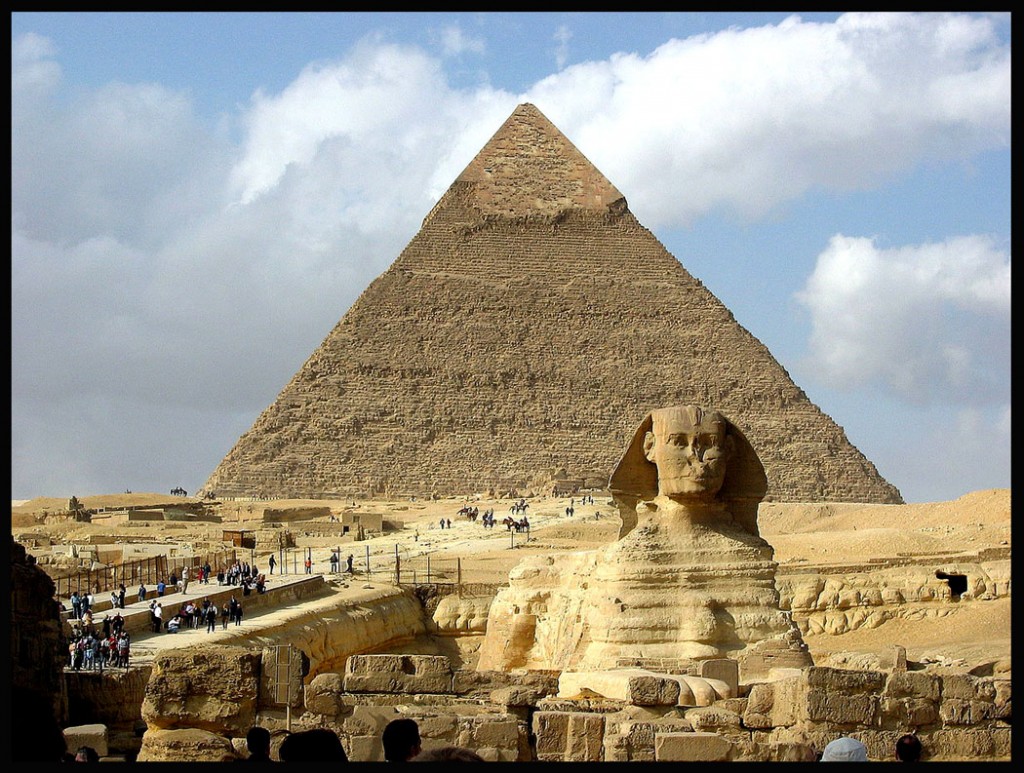
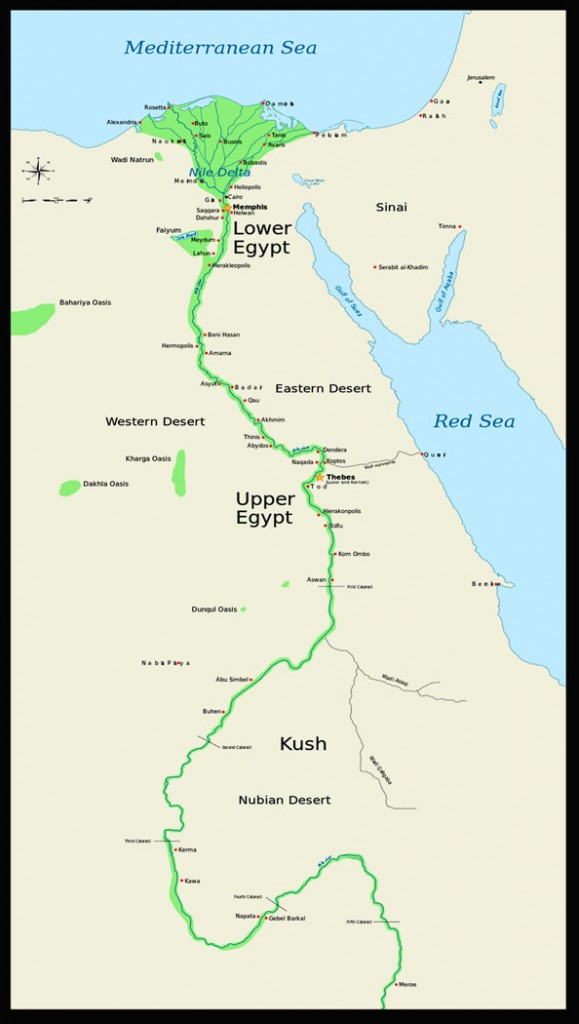
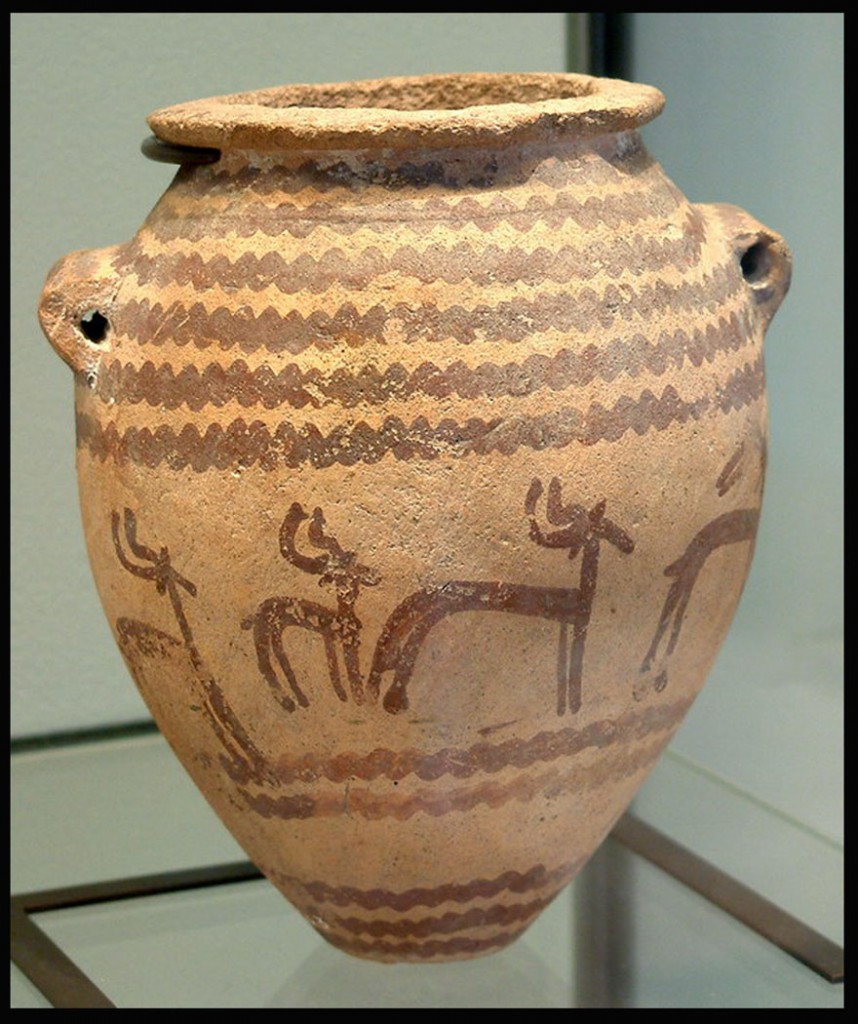
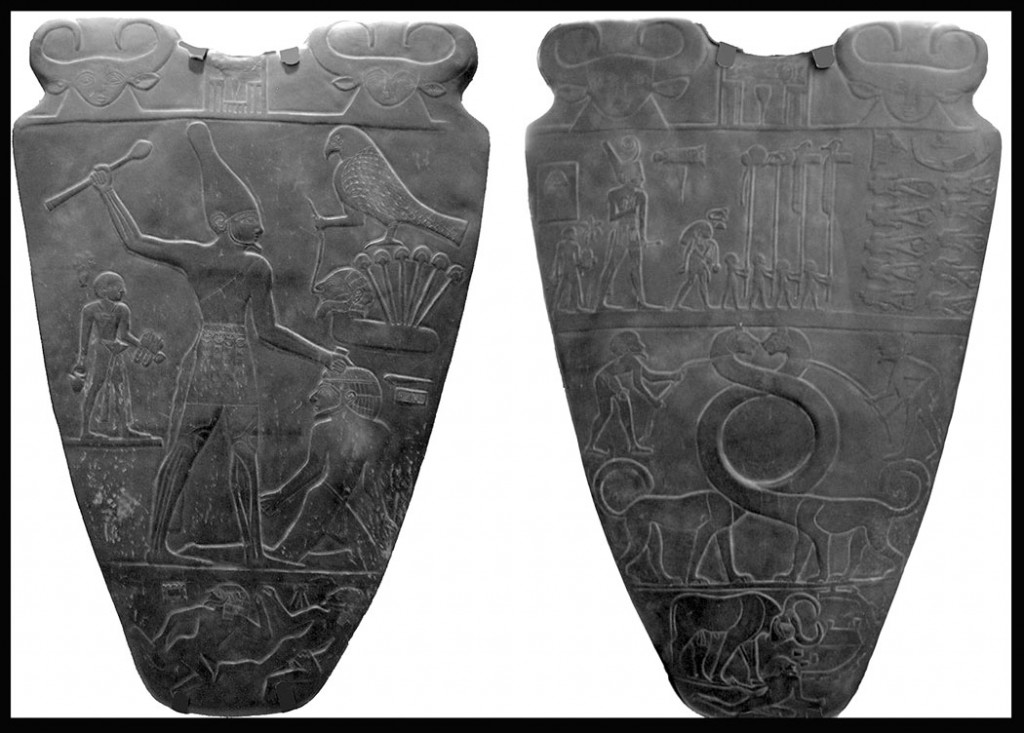
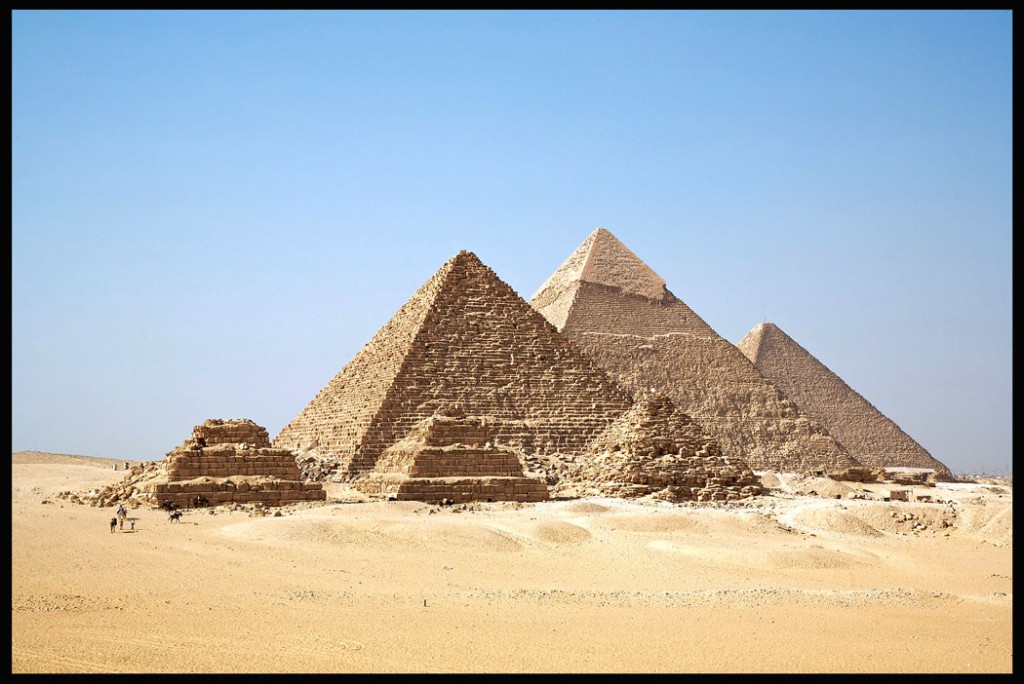
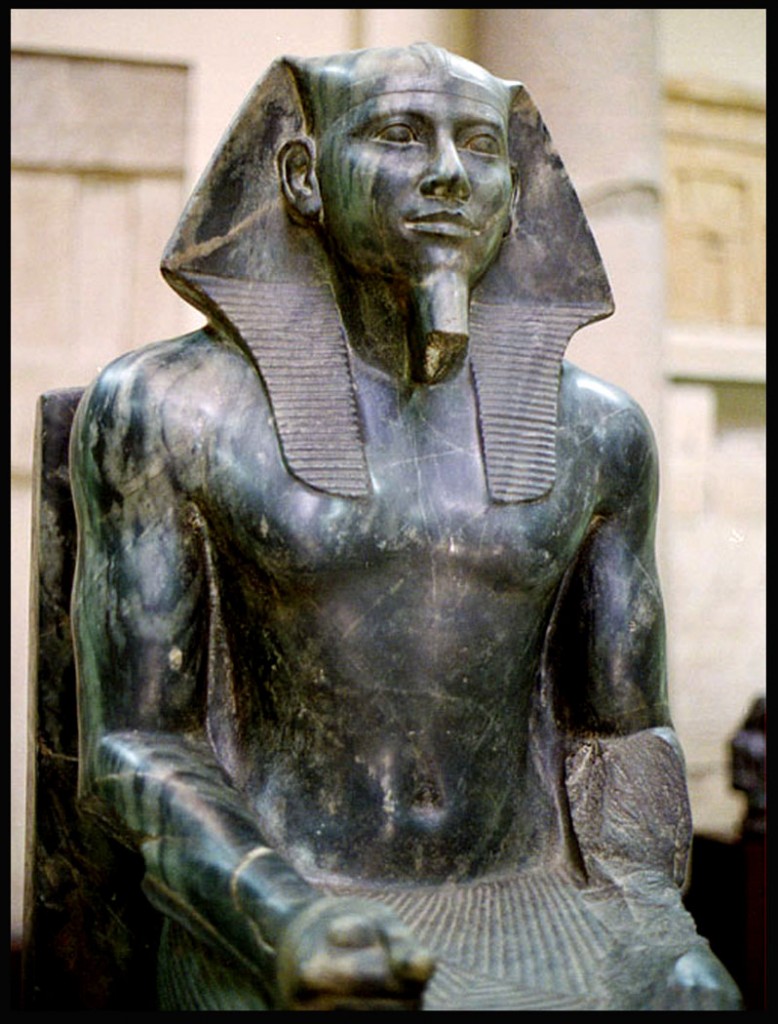
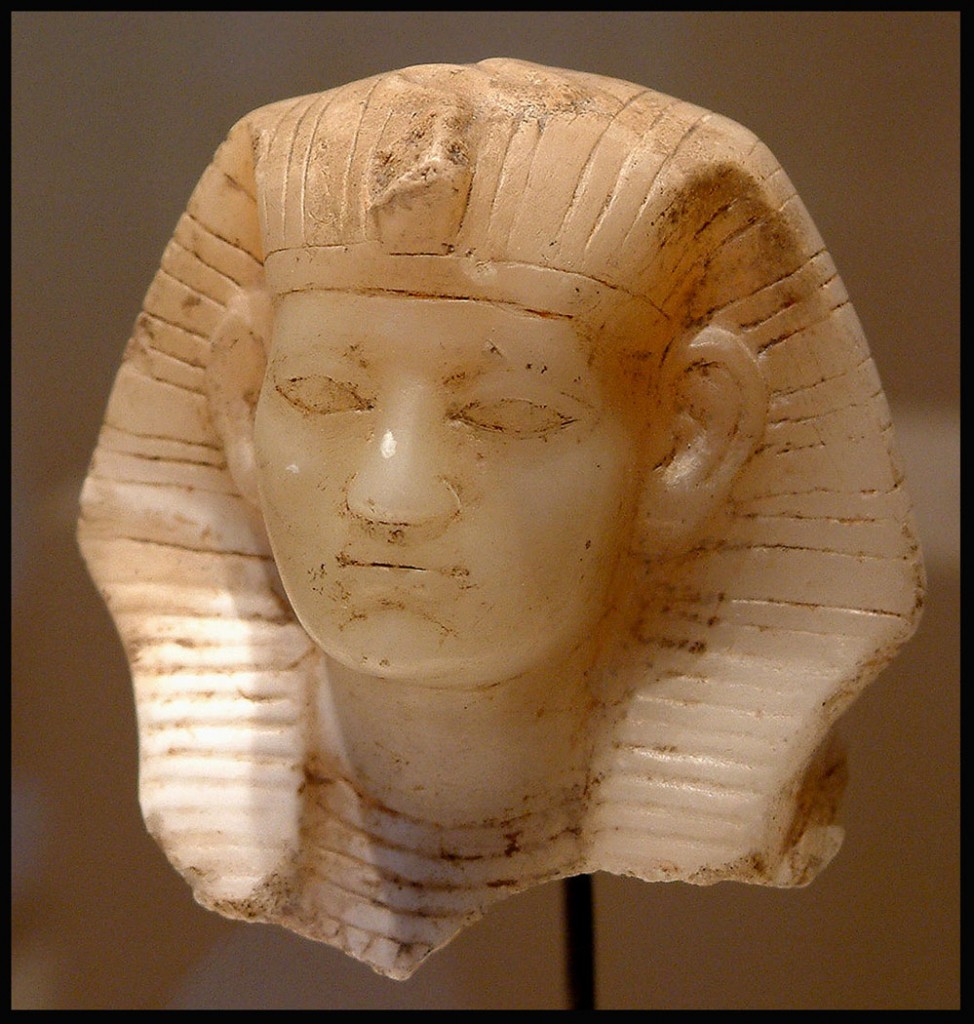
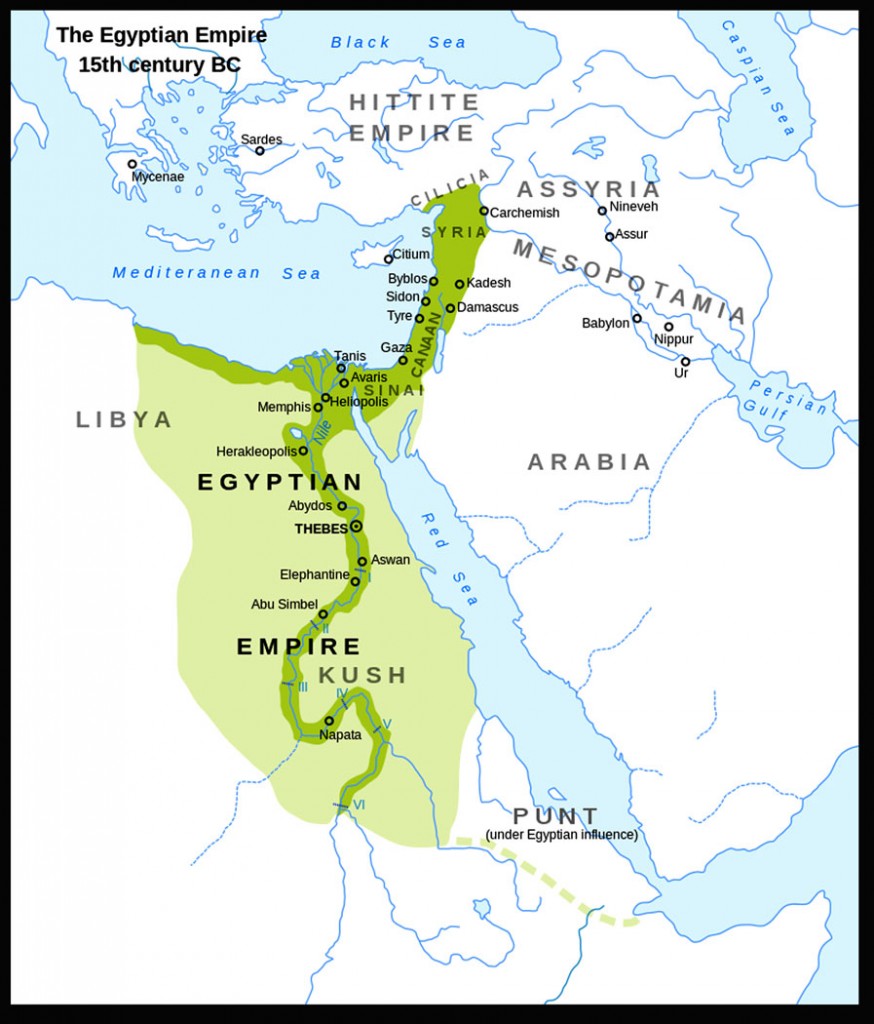
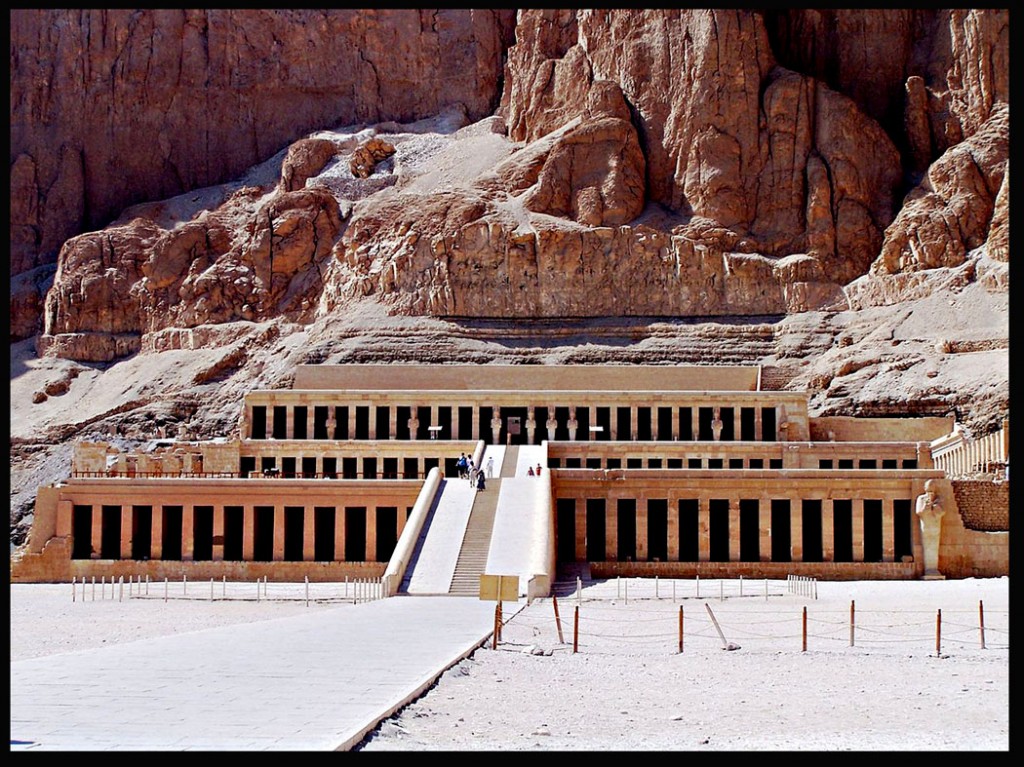
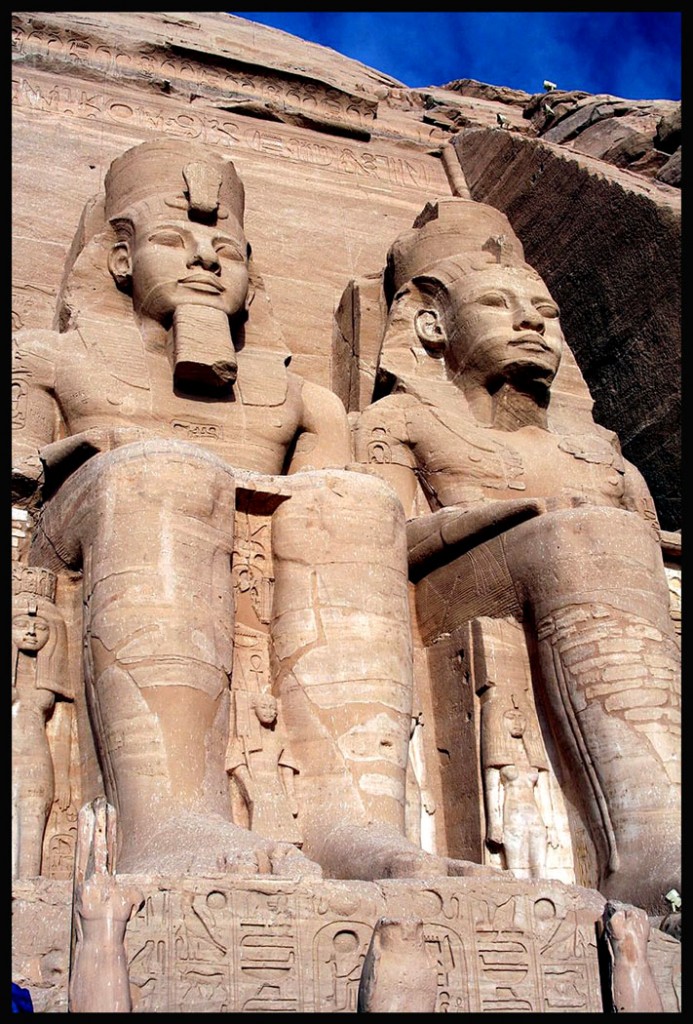
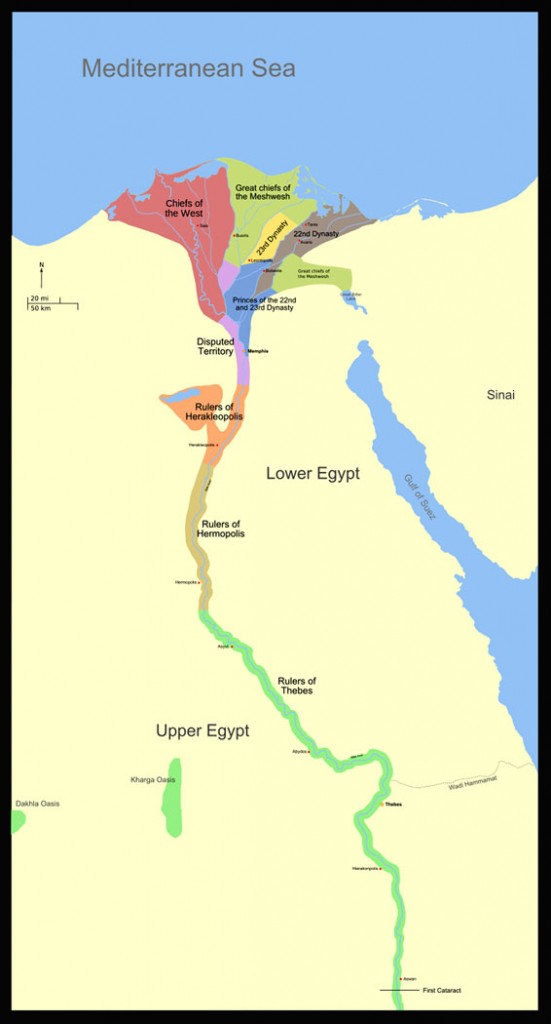
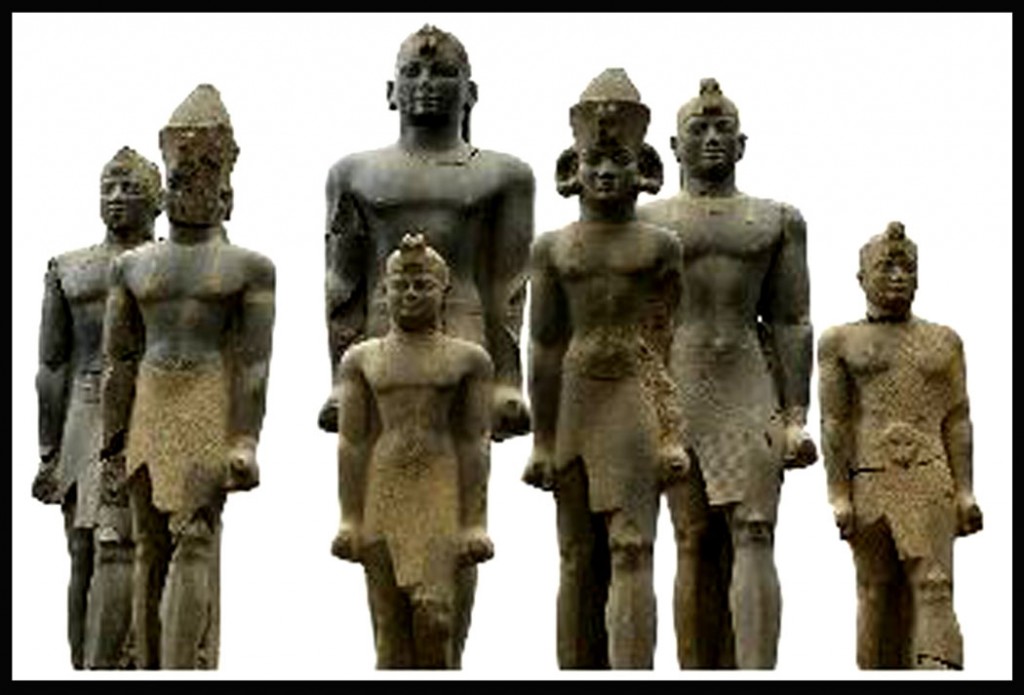
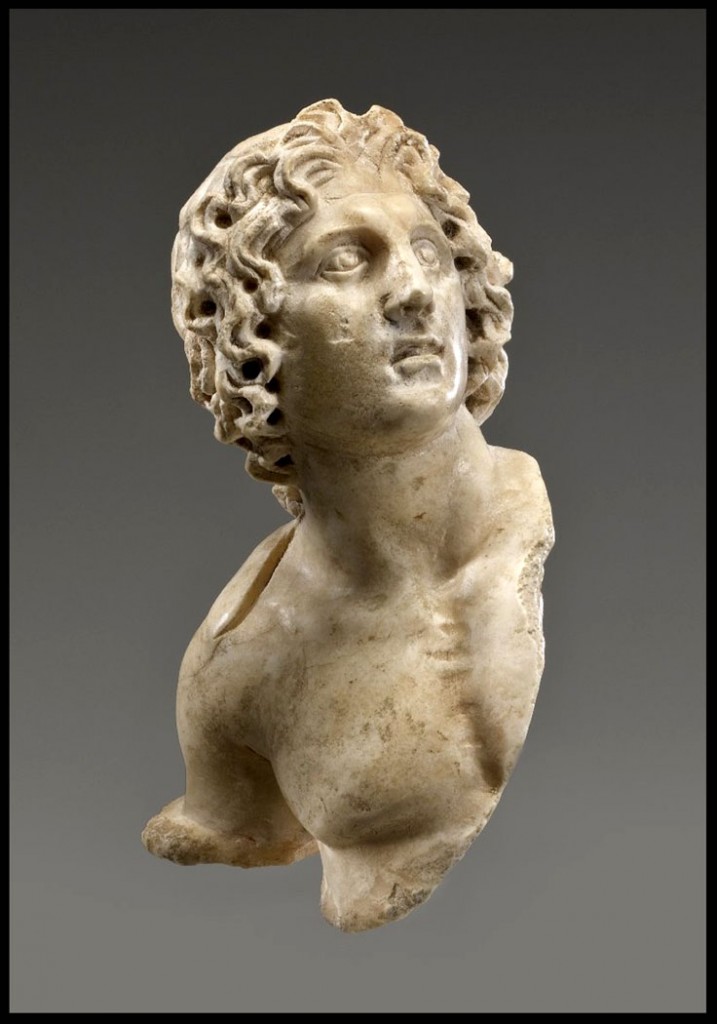
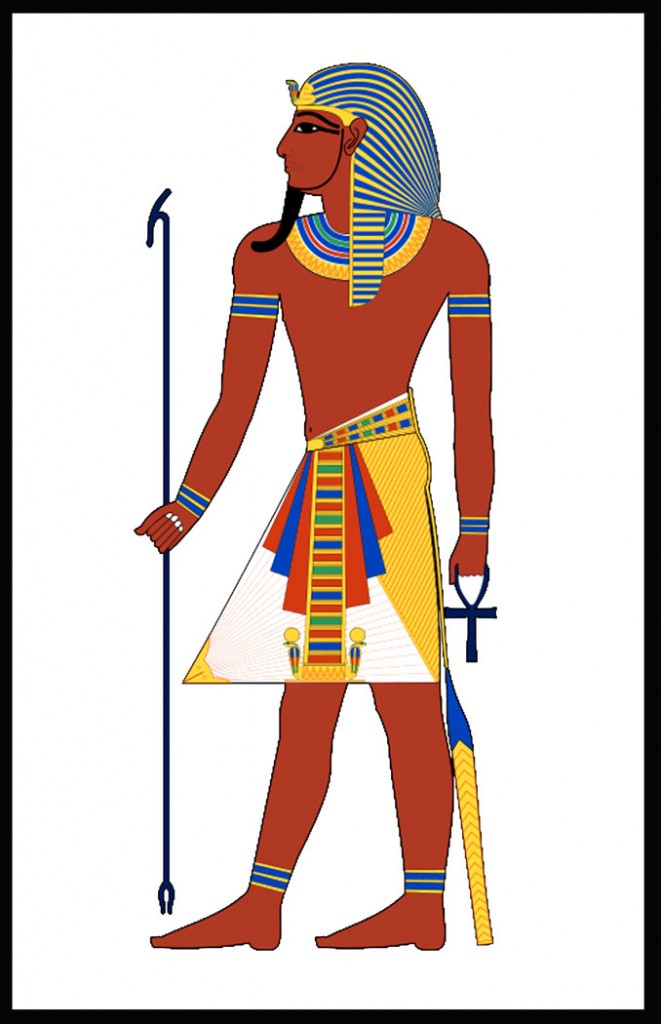
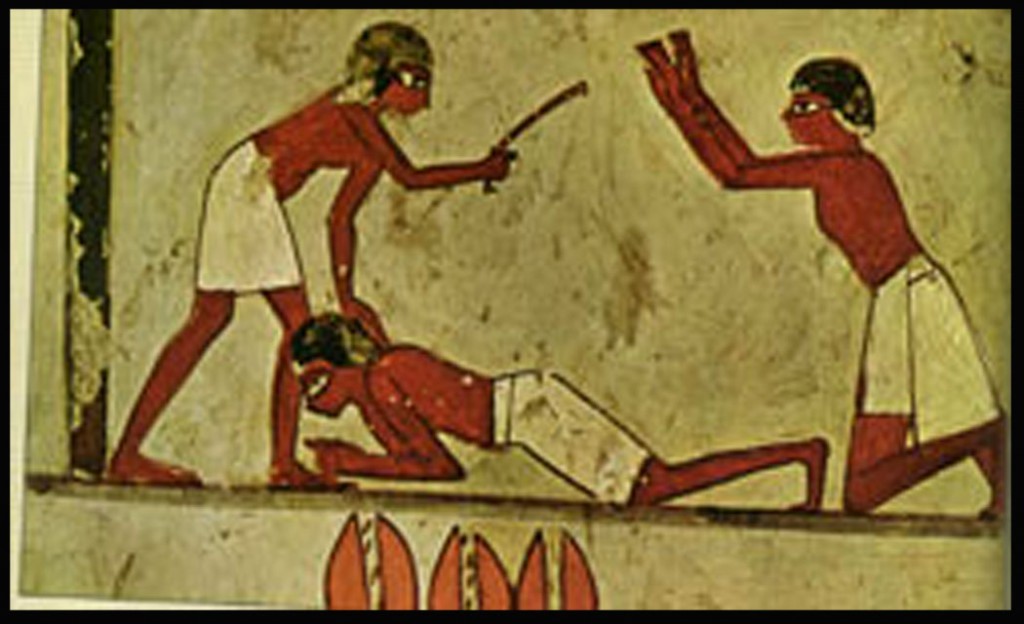
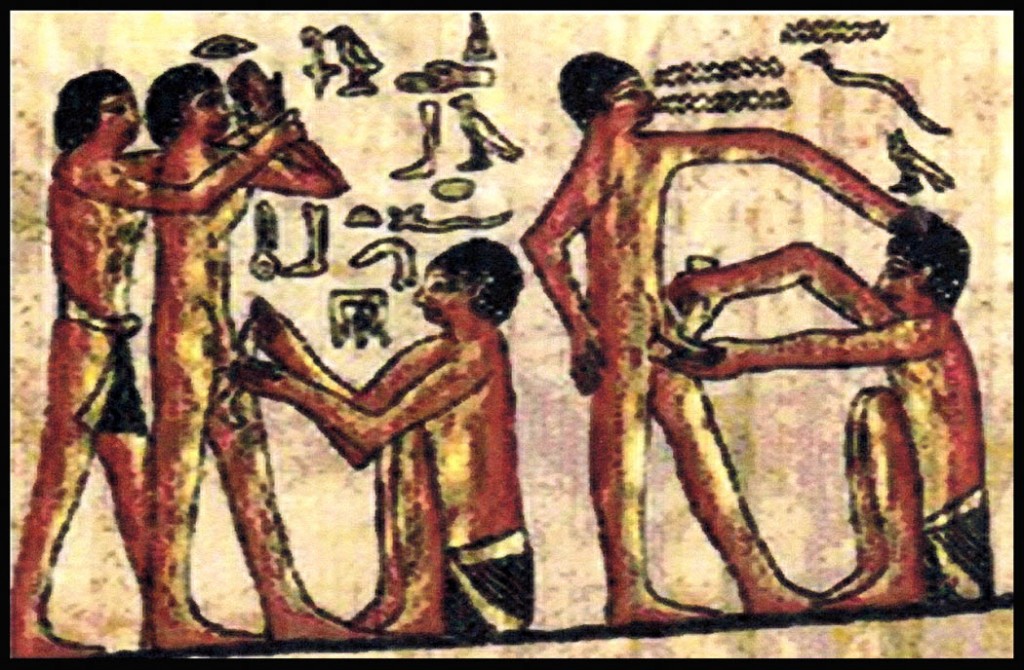
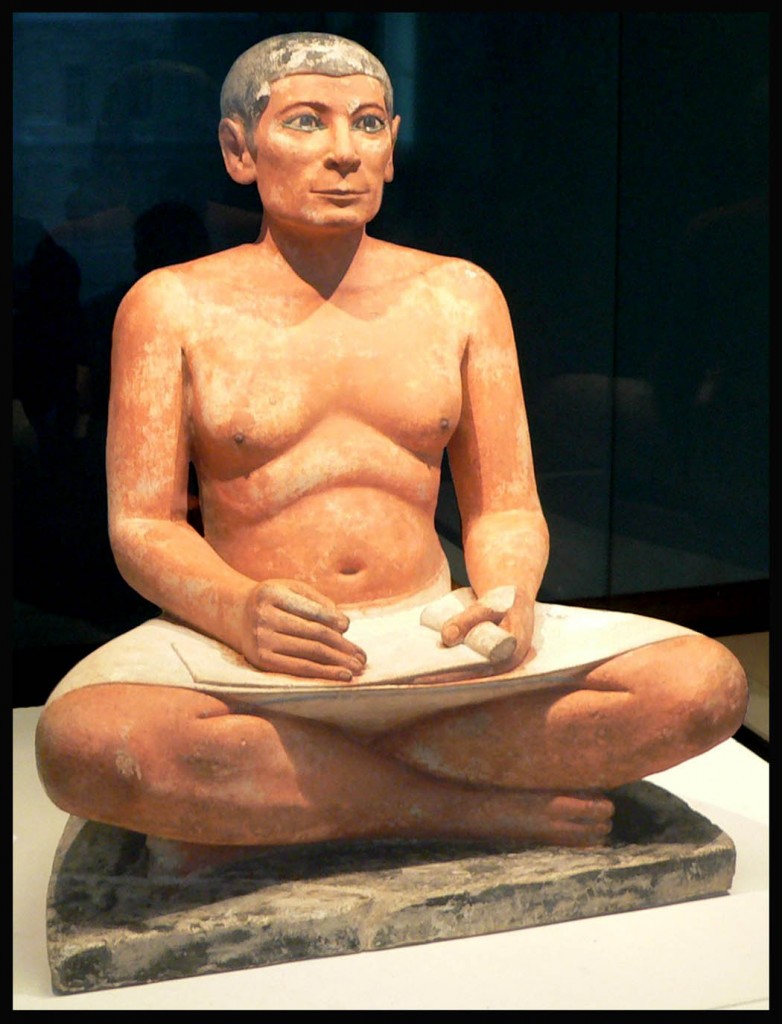
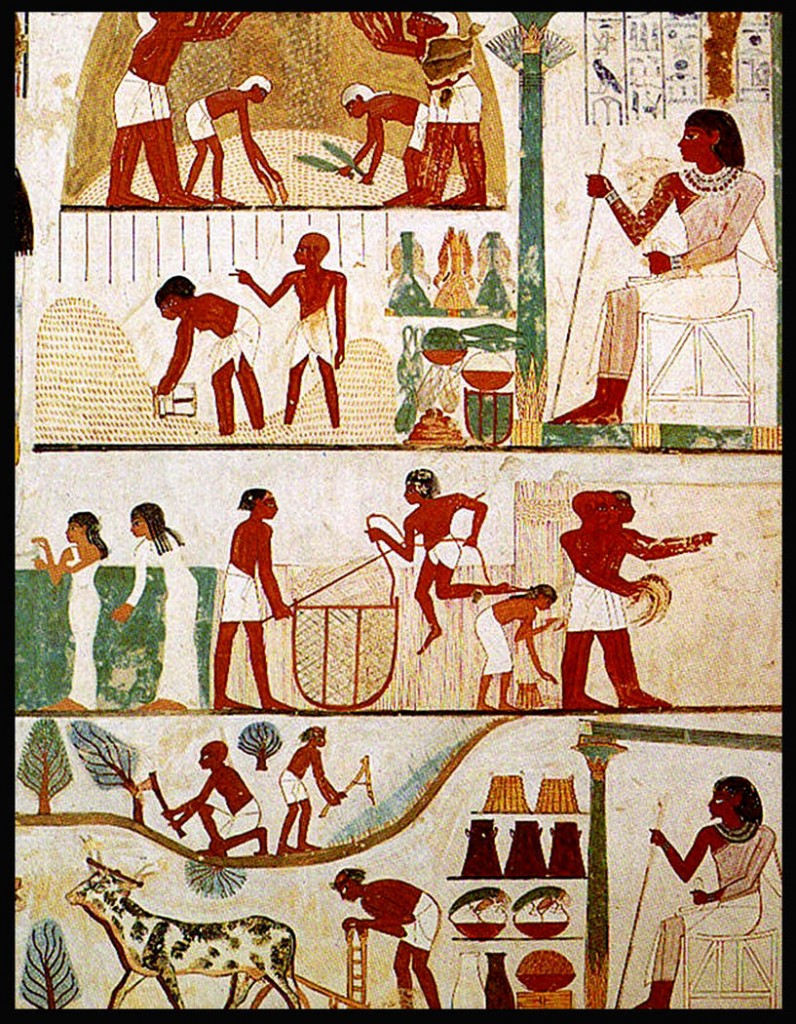

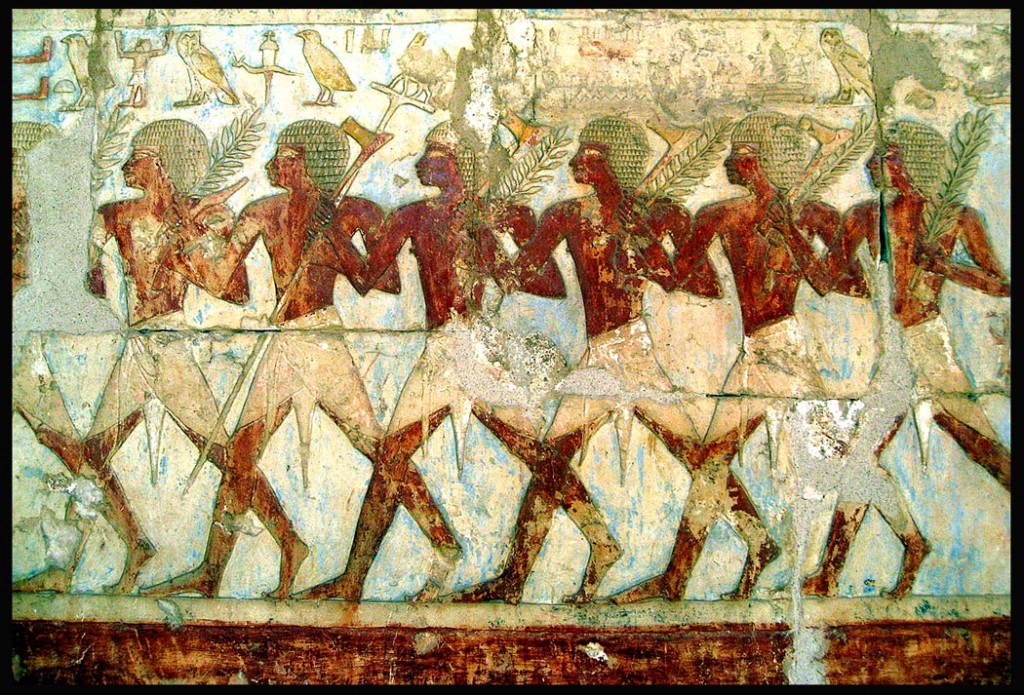
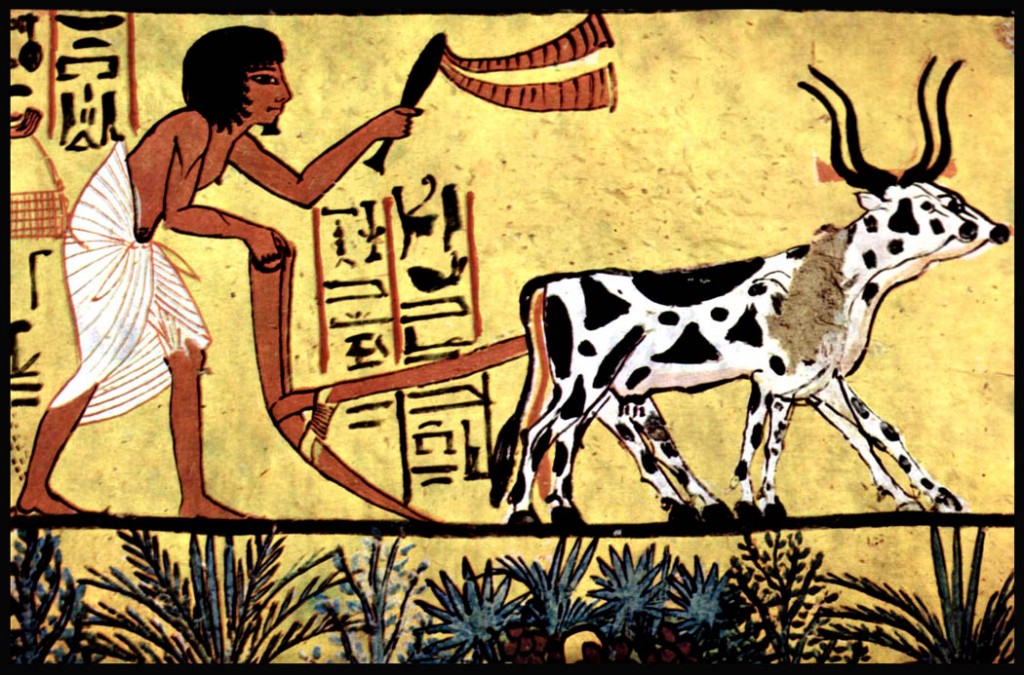
Leave a Reply